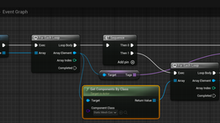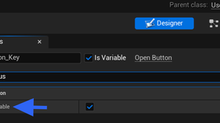It's a Trap
- Tom Mooney
- Sep 1, 2024
- 10 min read
Describing Traps in Conversations about Trap Design
This document lists a variety of trap types. It is agnostic about any particular game project. Sometimes people struggle to describe the facets of the trap they're trying to make, since the terms that crop up in trap or puzzle design are like forks with multiple prongs, the ones that devils like to wave about. Also, this is intended to test assumptions about what is needed to even start on trap preparation.
Let's start with some categories.
Instant Trap
Description: A trap that triggers immediately when a player enters some area or interacts with some object, causing instant damage or effects without warning. Often known as ‘gotcha’ mechanic. It’s cold to kill a player who didn’t otherwise make any mistakes. Consider limiting instantly lethal traps to cases where the player already made a fatal mistake and the trap reflects the error (ie spike pits in Prince of Persia, where player falls and the spikes confirm the mistake). An agreeable usage of a gotcha might be where the trap only applies an ailment or is the trigger for a set of upcoming incidents, like poison (ongoing) or slowly crushing walls (ensuing) that players can mitigate or respond to if prepared.
Pros:
Creates tension and promotes focus.
Punishes reckless exploration or lack of caution.
Very convenient for enlivening props with movement and sound in the context of environmental world building.
Cons:
Can feel unfair if there's no way to foresee or counter it.
May frustrate players or look odd if used with a high frequency.
Requires variants to sustain repeated usage.
Hidden Trap System
Description: A trap can remain hidden while causing damage, for example darts that fire out of ivy covered walls. Another option is that a non-active trap remains hidden until triggered, at which point it can be figured out by observation and possibly disarmed, A trap can also precipitate a new encounter (such as a tripwire that opens a cage to release a dangerous creature, where the primary danger is from the creature).
Pros:
Encourages careful exploration and the use of detection skills or tools.
Adds an element of suspense and visual search (plays on biological impulses).
Cons:
May slow down gameplay as players proceed cautiously.
Can be frustrating if detection mechanics are unreliable.
Trapped State
Description: A trap that confers a status of being immobilized or slowed or unable to use actions that are normally available, that requires some condition to be met before one can continue. Depending on the game type, this may be met by the player or by other players in the game. An example is the Warp Bubbles and Warp Disrupters deployed in Eve Online.
Pros:
May be utilised to make players work together as a team.
May create a shock at being extra vulnerable.
Cons:
Has to be carefully constructed so as to avoid the problem of reducing player agency; it can be difficult to determine if it works or not. The loss of agency can be offset by the fact that the player can also utilise such a trap.
Players may not know what is happening or how to break free, so providing some form of tutorial might be needed.
Magic Trap
Gameplay Description: A trap that has some or all of these points: it’s constituted by magical means, or it uses a magic spell in execution of its affects, or it requires magical means to deal with it, or it cancels out use of magic. There's probably more that could be added here. Hopefully the point is clear.
Pros:
Fun to mess with creatively, for both designers and players.
Fun to mess with VFX.
Cons:
Since magic is basically made up, there may not be tangible limits to bound magical functionality (though this may be seen as a positive thing — depends on the designer) OR the magic rules may be so specific that the trap isn’t very versatile or it may not match well with player controlled magic. For example, a spike trap may kill a party member or make them bleed, but a magic trap might blast the entire planet into a temporal anomaly only solvable in a Star Trek episode.
Players have to fairly intimate with the magic system to understand how the trap should be handled.
Environmental Hazard
Description: A risk arising from nature’s physical laws. Falling stones, flooding caves, lava spouts, geysers, rotting floors. These exist by causality, not design. They can be used to alter the expected path in a scene, make the scene feel active and unpredictable (vs static scene where nothing in the environment is affected except designer placed ‘game objects’). It’s usually best if the environmental hazard has a tell (if it’s very dangerous) or isn’t too severe if it’s a sudden surprise.
Pros:
Encourages careful exploration and the use of detection skills or tools.
Adds an element of suspense and visual search (plays on biological impulses).
Where physical simulation is involved, the unpredictable outcome may produce emergent gameplay.
Can be leveraged for path denial, to force players along another path.
Cons:
May slow down gameplay as players proceed cautiously.
Can be frustrating if detection mechanics are unreliable.
Where physical simulation is involved, an uncontrolled outcome may create risky edge cases for developers.
Puzzle Hazard
Description: A visible damage dealing device that someone has constructed according to some rule-based operation. These are often deployed as a barrier to progression in an area, presented as a puzzle that must be solved through careful observation and manipulation.
Pros:
Engages players' problem-solving skills.
Creates a sense of accomplishment when solved.
A nicely bounded canvas for some novel gameplay experience.
Cons:
Puzzles are often an encapsulated experience disconnected or isolated from the game's world. This can potentially disrupt immersion.
Sometimes the puzzle’s nature is too easily recognizable (favourite slippers still wear out). If it has already been completed, there's a risk it doesn’t sustain replay.
Can interrupt the flow of the game if it’s too complex.
Hazard Sequence
Description: An extensive trap system or gauntlet that requires the player to navigate quickly or with a show of skill, without necessarily being able to disarm it. These may employ patterns of action that, once identified, give observant players an edge.
Pros:
An opportunity to provides an adrenaline rush and test of reflexes (appeal to biological urge).
Cons:
May alienate players who prefer strategy over action.
Can feel repetitive if not varied enough.
Stage Progression or Escalation Hazard
Description: Traps that become more difficult or numerous as the player progresses through an area or level, escalating the challenge.
Pros:
Rationally increases tension and difficulty, creating a satisfying stacking of accomplishment as players succeed.
Can integrate well with narrative build-up, as the mounting danger matches the emotional stakes of the story.
The next state can be responsive to player actions at previous stage.
Cons:
If failure requires successive redo attempts, and the sequence is long, frustrated players may opt out.
Risk of overwhelming the player if escalation is too rapid (difficulty spike).
Usually requires a unique environmental integration/grounding to make sense.
Player Created Trap
Description: Traps that players can craft or set up themselves, using in-game resources, skills, or tools. These traps are deployed strategically to protect an area, ambush enemies, or create tactical advantages in combat or exploration.
Pros:
Empowers players by giving them creative control over the environment.
Allows players to plan and execute ambushes or defences, which may be relevant to certain game situations.
Adds a layer of resource management and decision-making, as players must choose when and where to deploy traps.
Cons:
Designers may have to limit player created traps (not facile or too powerful), depending on the larger game needs.
Requires careful design to ensure that setting traps is a procedure that’s accessible to most players.
Trap Disarmament: Stat-Based vs. Player Process
Stat-Based Detection Event or Dice Roll
Description: Traps are detected and disarmed through a character's stats or a dice roll, sometimes hidden from the player. Success may be determined by the character’s obtained abilities more than the player’s current attention.
Pros:
Leverages the systemic RPG elements of character development and skill progression.
Allows for streamlined gameplay where players can focus on strategy rather than micromanagement.
Validates player progression systems.
Cons:
May feel passive and less interactive, as players have little direct control.
Success or failure can feel arbitrary if not communicated well to the player.
Limits the player's agency, relying on character stats rather than player skill (although of course managing stats is a kind of skill itself).
Disarmament by Player Process
Description: Players actively disarm traps using their own efforts (ie, throwing a boot at diseased bats to scare them off) and observation (ie, bats only roost on non-trapped statues), interacting with the game world to solve puzzles or avoid hazards.
Pros:
Because the player determines what they’ll do, it can give players a sense of control and accomplishment.
Having to find objects to combine or utilise in a trap context encourages exploration and interaction with the environment.
Cons:
Can be difficult for players who are less skilled at puzzles or observation-based gameplay.
May slow down the pacing of the game if overused or if the mechanics are too complex.
Requires thoughtful design to ensure the process is challenging but fair, and resources to commit to very nuanced implementation.
If the game offers disarm kits, the trap system gets entangled with the game economy (so consider the added work).
Broad Design Considerations
Things to aim for:
Integration: Broadly speaking, the game’s “look and feel” spreads to every element in the game. Traps should fit in with that. Determine if you want the trap to strongly mesh with the context of the environment and the story, or stand apart as a sort of side feature or set piece. Note that sometimes a game feature is designed out of sync with the game lore being available yet, because of production schedule and prototyping, and different teams may approach certain features with different aspirations and talents.
Execution: Planning is everything, but counts for nothing without good execution. It’s good to aim high, but also try to keep design within your resources.
Plausibility: If one wants traps to be believable, showing the diegetic motivations for their existence may help. To some degree, ‘rule of cool’ also applies, where if it’s fun enough, the perfect integration with the setting is secondary to how engaging the encounter is.
Telegraphing: While traps should be challenging, they shouldn’t feel unfair. Viable methods should exist to clue the player up to the involved challenge, allowing observant players to anticipate or avoid traps.
Reward: Successfully navigating or disarming traps should provide tangible rewards, reinforcing the player’s sense of achievement.
Variants: Often the mechanics of a trap are repeated throughout a game; where possible, a trap should appeal to the players recognition of this repetition, but include enough variation so that the repetition still feels natural (ie, the gas trap in Mo’s bar is accidentally caused by a faulty utility, and the gas trap in Crusty’s mansion is caused by a nefarious assassin).
Changing environment: There are opportunities to enliven a scene by altering the first state of an environment based on the trap action. Traps can thus be used as a kind of grammar to indicate opening up alternative paths, or closing existing paths.
Pitfalls to avoid:
Overuse: Too many traps can lead to fatigue, particularly if failure sets players a long way back, over and over.
Inconsistency: Traps that are made from similar parts but behave very differently will seem out of place and can break immersion.
Too mechanical: Designing traps purely from a mechanical perspective can lead to a disjointed experience where the trap feels more like a gamey obstacle rather than a natural part of the world.
Unlikely to exist: For the most part, traps aren’t something that exist unless someone set them up. Interrogate the trap design from the diegetic POV of whoever instigated it.
Player types: Some players will fail to figure out traps; some players may have learned to dislike all traps, some players may be oblivious to information (text skippers). They should still be treated as welcome players.
Shipping a prototype: Often the first pass uses shorthand (ie, instant replace/remove/add of assets) in the first playable stage. Surprisingly often, this isn’t polished in the final version and can downgrade the game.
Mechanisms: Traps often require moving parts, like levers and pipe networks and pistons and gears, occurring in a place where otherwise such things wouldn’t fly — they only occur in the world to permit the trap to exist. If your gameworld has woodsmen, witches and warriors by and large, and your trap has electrical laser beams and energy fields, you have a problem with the materials. Another aspect of this is the perfectly running, well-oiled trap in the long abandoned, ancient dungeon.
💡 General notes
Traps are subject to a Goldilocks rule of ‘just right’. Practice making traps! This is the best way ensure the sweet spots of trap functioning are hit. Traps exist in a place of tension between being too hard and too easy. It’s not about designer intention; it’s about player testing and balance.
Players like to figure things out. The emotional reward at succeeding at a challenge is often the reason they engage with the game. Not everyone is great at it. Figuring things out doesn’t mean the trap has to be an immense cognitive feat only a few in the world are able to solve (though there is a place where cases like that shine too). Solicit external feedback and be ready to respond to it, (especially from a fanbase if your game has a following).
Players like something visceral to react to. If a trap makes a gross squelchy sound and your teeth scatter on the stone floor when it pulps your skull, you may find getting a pulped skull is fun. With that being said, few players react well to being unexpectedly or unavoidably killed, however it can happen in life. Still, the futility of seeing an unavoidable doom is the human condition. Games can play on this.
The feeling of malicious game design is different from that of a malicious game setting (some games are totally brutal and full of barriers; it works if that’s the selling point and players are buying into it).
Trap resolution can be a natural lead-in to scene transitions and cinematic events. Some games signal the presence or onset of a trap sequence with a cinematic moment.
In production, traps often require intricate coordination of planning, art, sound, scripting, writing, and coding. For this reason, make sure the trap is really needed. It takes a lot of polish to ship traps in a state beyond a prototype. Make sure the trap is robust, refined and ready on time.

















































































Comments